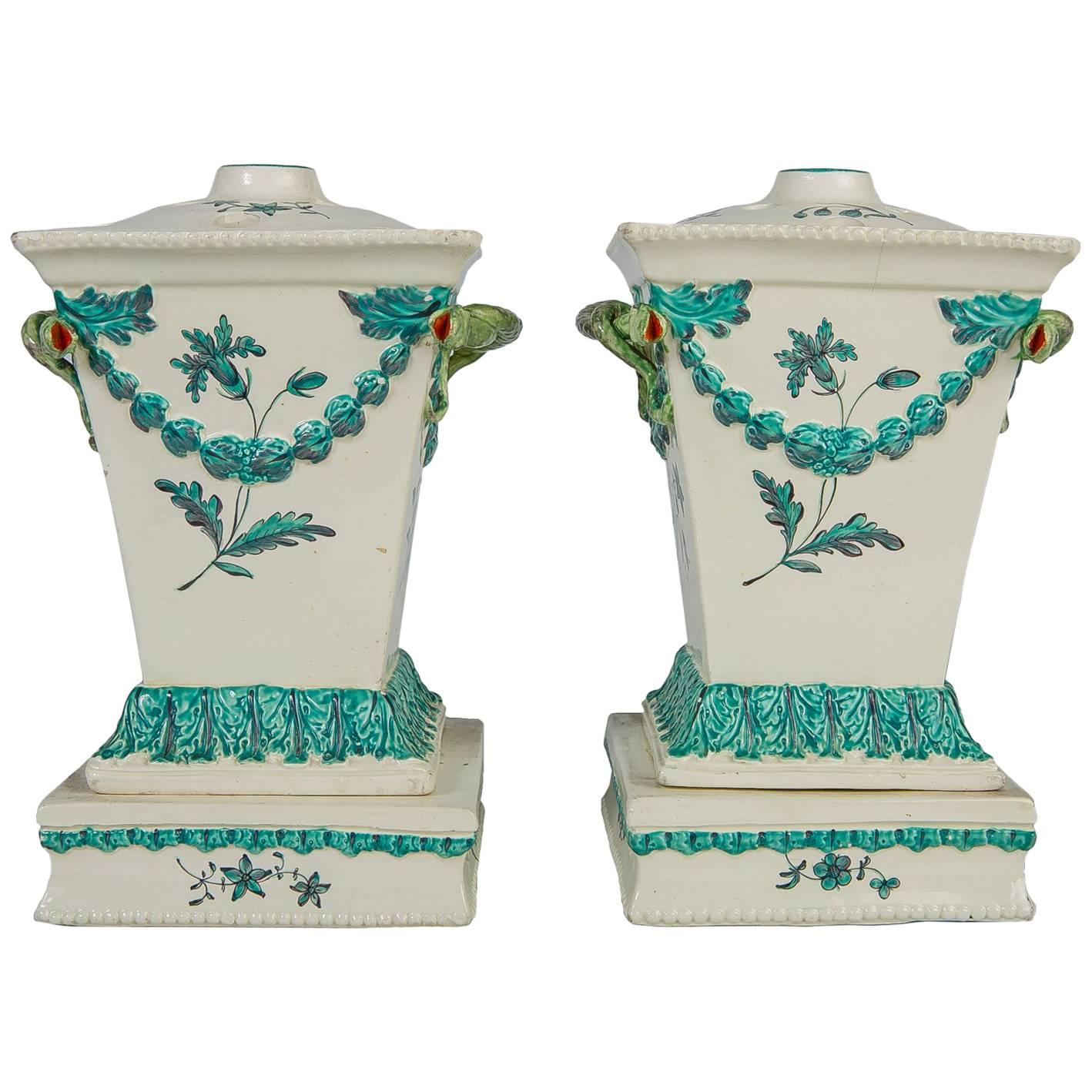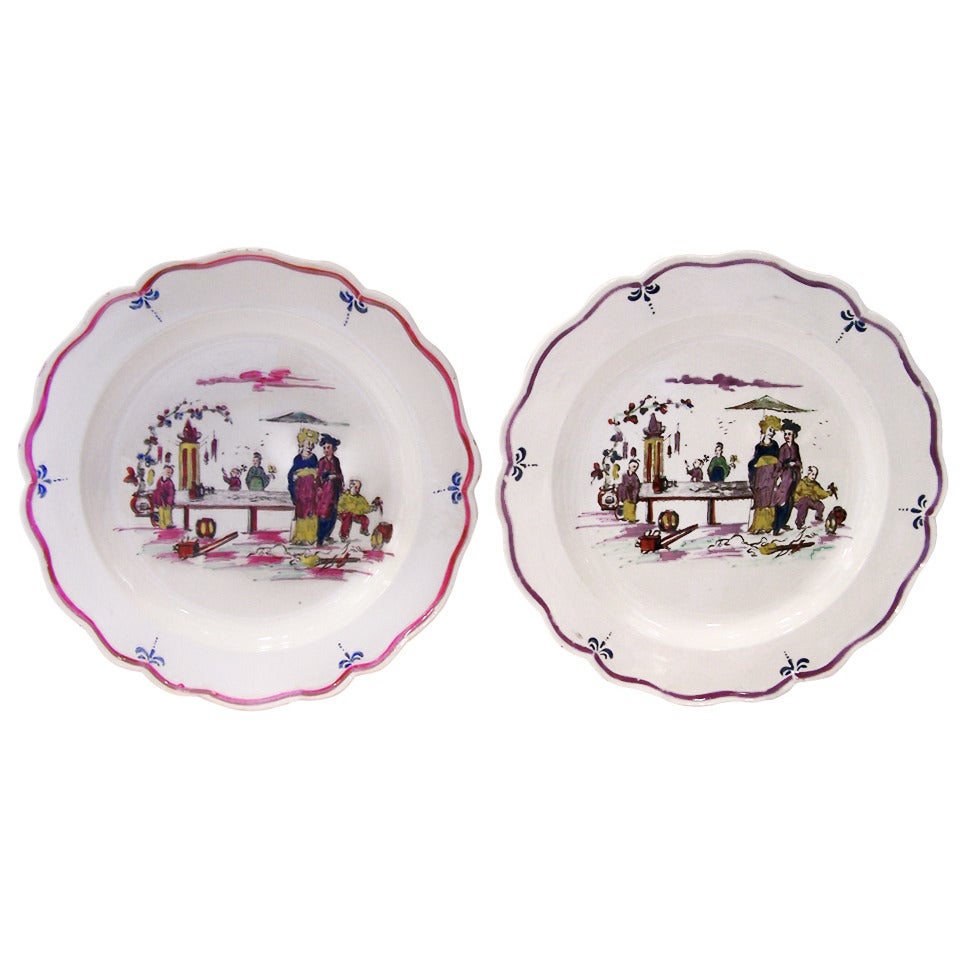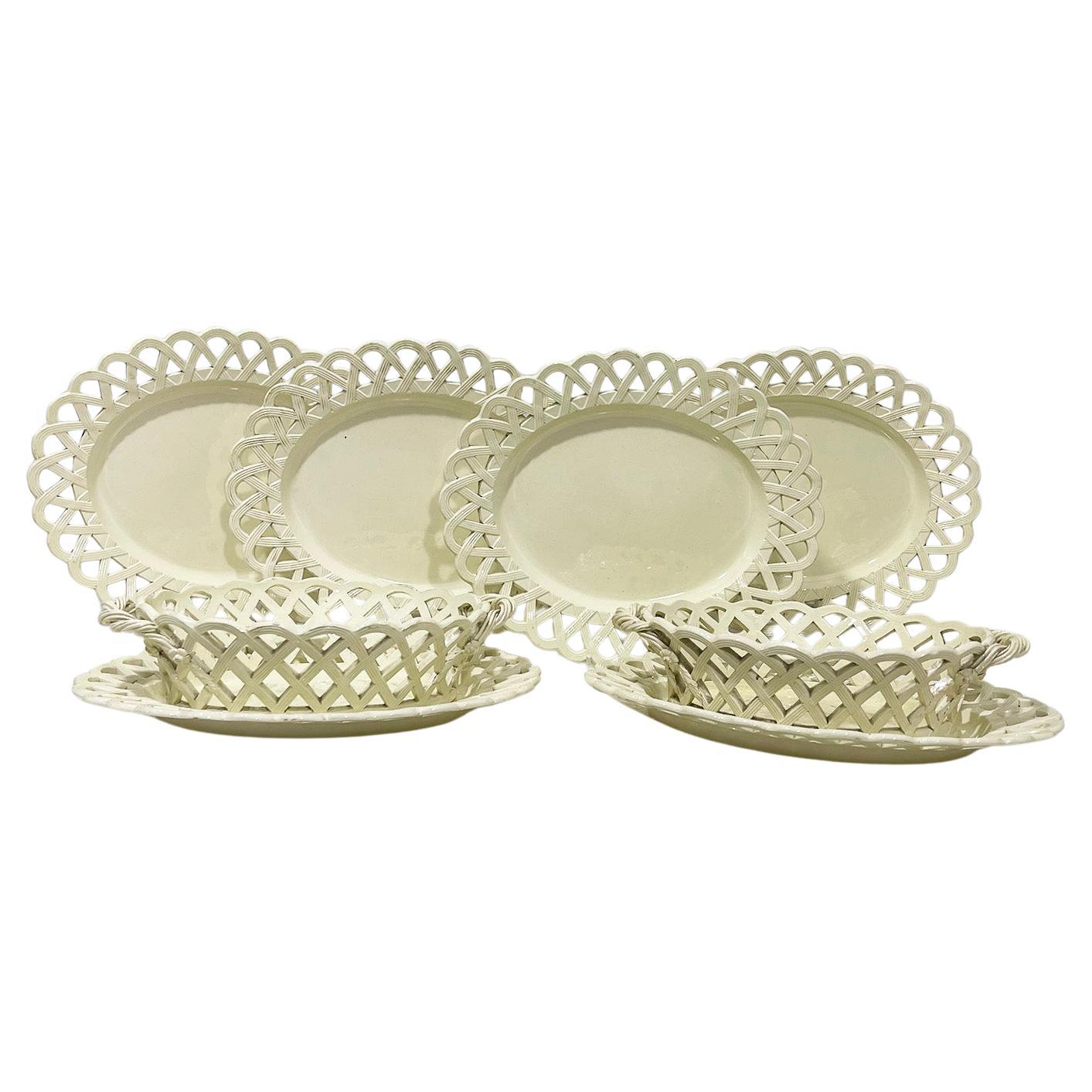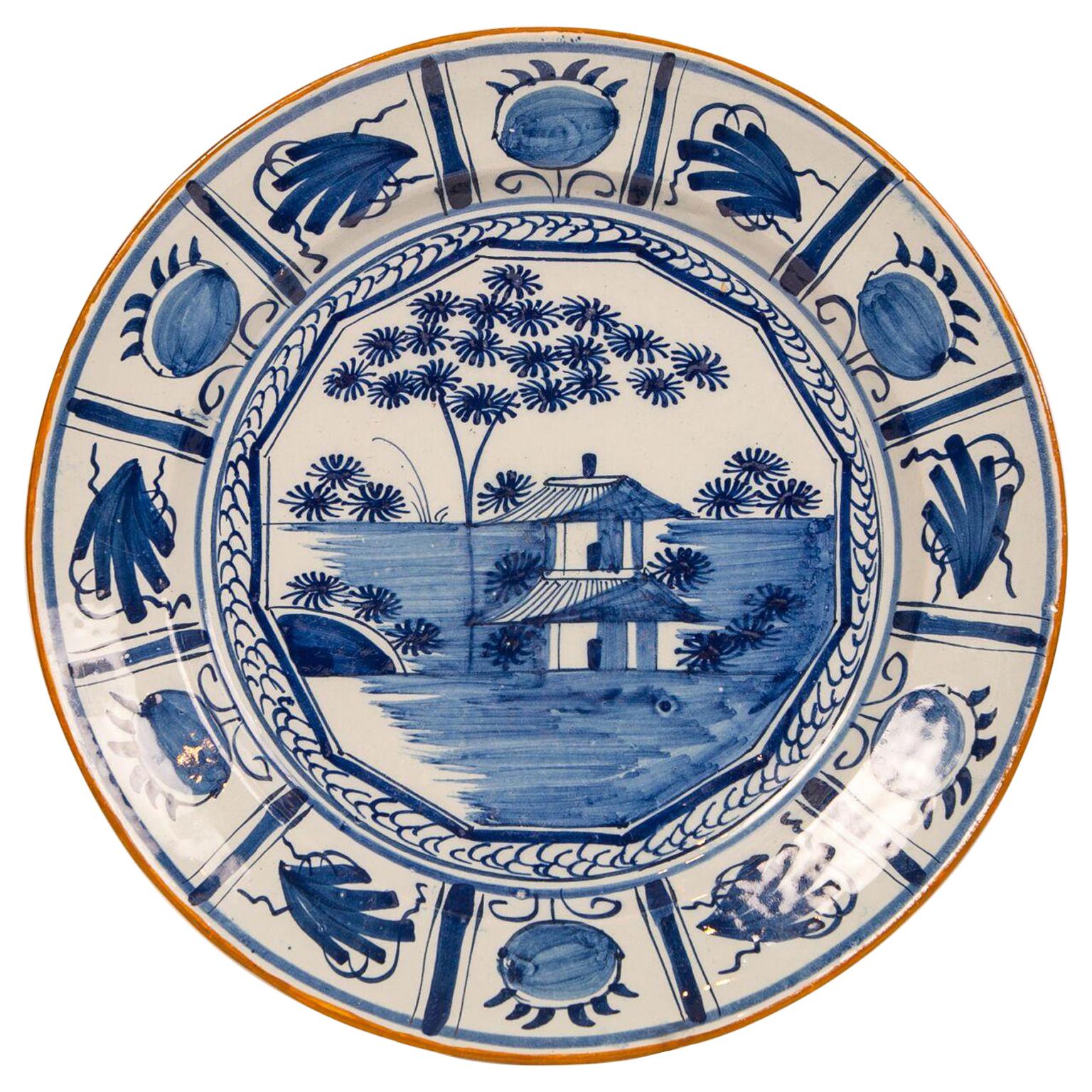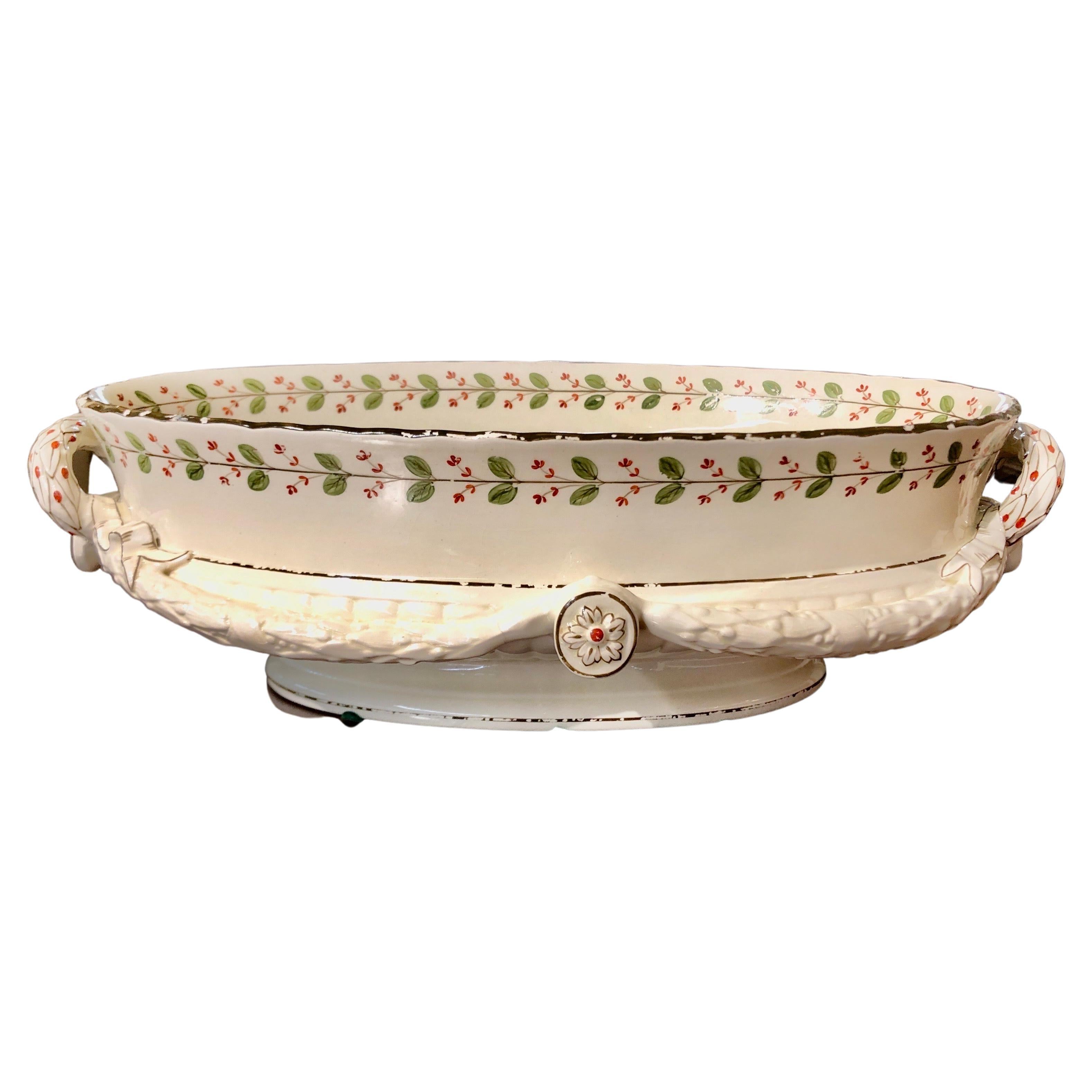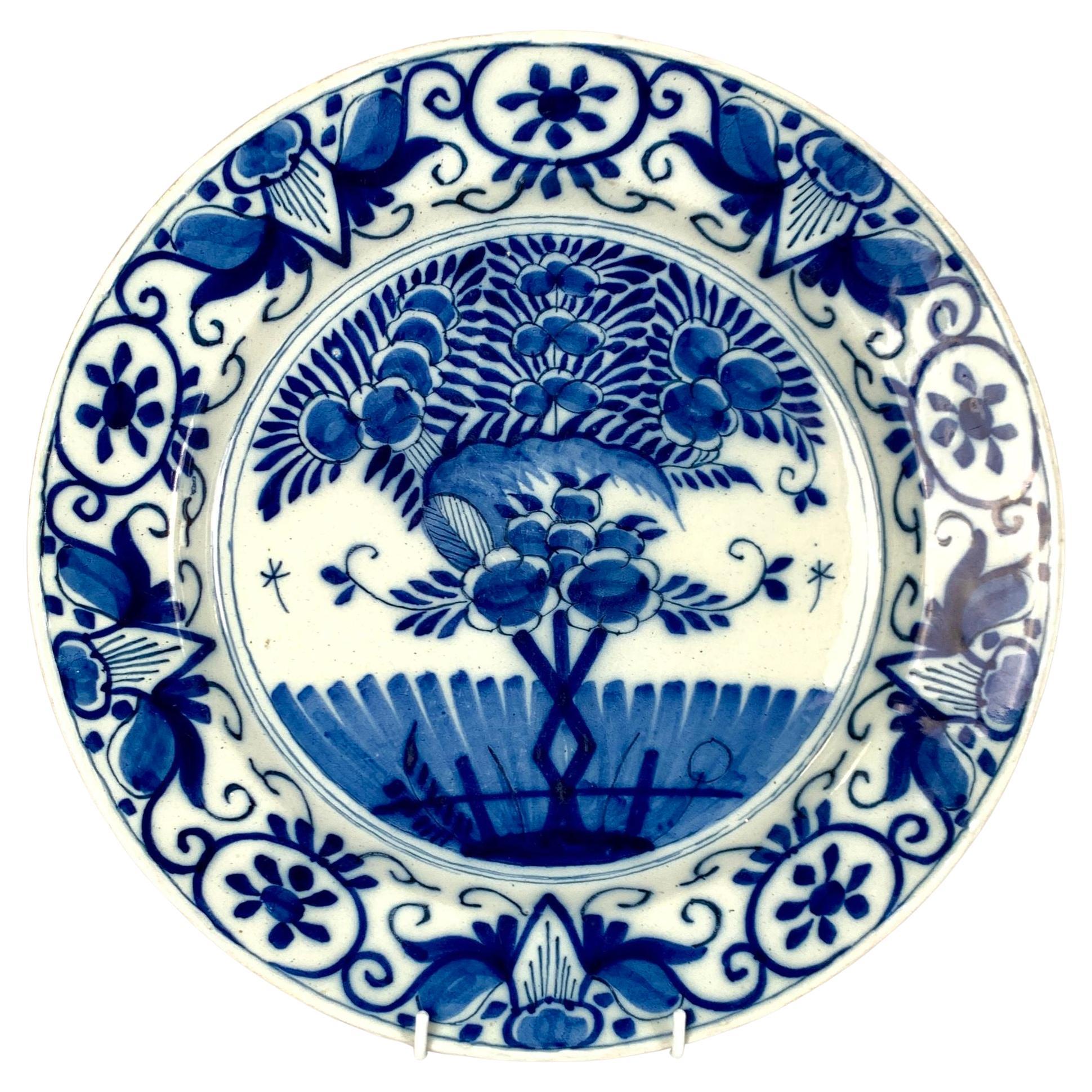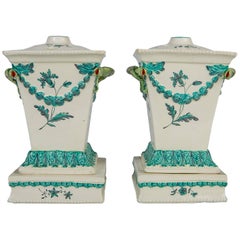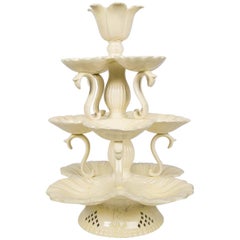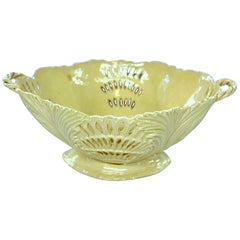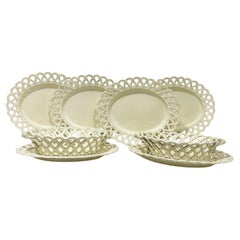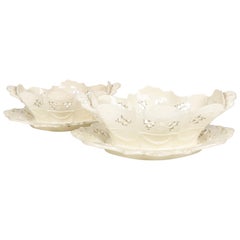
Pair of Antique Pierced Creamware Baskets and Stands 18th Century circa 1780
View Similar Items
Want more images or videos?
Request additional images or videos from the seller
1 of 9
Pair of Antique Pierced Creamware Baskets and Stands 18th Century circa 1780
About the Item
- Dimensions:Height: 3.75 in (9.53 cm)Width: 10.5 in (26.67 cm)Depth: 9 in (22.86 cm)
- Sold As:Set of 2
- Style:Rococo (Of the Period)
- Materials and Techniques:Creamware,Molded
- Place of Origin:
- Period:
- Date of Manufacture:circa 1780
- Condition:
- Seller Location:Katonah, NY
- Reference Number:1stDibs: LU866511325193
About the Seller
5.0
Recognized Seller
These prestigious sellers are industry leaders and represent the highest echelon for item quality and design.
Platinum Seller
These expertly vetted sellers are 1stDibs' most experienced sellers and are rated highest by our customers.
Established in 1962
1stDibs seller since 2009
422 sales on 1stDibs
Typical response time: 1 hour
More From This SellerView All
- Creamware Pair of English Flower Holders, 18th Century circa 1780By Neale & Co.Located in Katonah, NYWHY WE LOVE IT: One of our absolute favorites! A pair of 18th-century creamware flower holders complete with stands and covers made in England by Neale & Co. was one of the finest 18...Category
Antique Late 18th Century English Neoclassical Vases
MaterialsCreamware
- Antique English Creamware 18th Century Sweetmeat Platt Menage circa 1780-1790By Leeds PotteryLocated in Katonah, NYWe are thrilled to offer this fabulous large three-tiered 18th-century creamware platt menage, made circa 1780-90 in Staffordshire or Yorkshire, England. It is a rare and elegant ex...Category
Antique Late 18th Century English Rococo Centerpieces
MaterialsCreamware
- Pair Creamware Dishes 18th Century England Painted in Pink & Purple Made c-1785Located in Katonah, NYThis is a pair of English creamware dishes from the 18th century, created around 1785. The plates display a lovely chinoiserie scene with women selecting accessories. The scene depic...Category
Antique Late 18th Century English Chinoiserie Ceramics
MaterialsCreamware
- Antique French Creamware Lions 18th CenturyLocated in Katonah, NYWe are thrilled to offer this exceptional pair of creamware lions, each elegantly resting on a tall base adorned with sumptuous swags of dark blue "curtains" with gleaming yellow tassels and trim. Crafted in France, these figures are unparalleled and truly a masterpiece of 18th-century creamware. They date back to the late 18th century, circa 1790. Each lion's head and mane is exquisitely painted with vibrant yellow and lined in striking midnight brown. Their mouths are painted in delicate pink, adding an extra touch of charm. Not only are these lions a sight to behold, but they will also bring a touch of humor to your home. Their jovial expressions make it impossible not to laugh along with them. Leisurely resting on cushions draped with rich fabric and tassels, these friendly lions exude a very French attitude, seamlessly blending formality and friendliness. Placed on a mantel, they would undoubtedly be the focal point of any room, commanding attention, and admiration from all who see them. These lions are genuinely a one-of-a-kind treasure that is not to be missed. Dimensions: 6.5 inches tall x 6.75 inches long x 4.5 inches wide Condition: Excellent Price: $3200 Background of creamware Creamware is the name given to a type of earthenware pottery initially made from white clays from Dorset and Devonshire combined with an amount of calcined flint. Creamware was first produced in England sometime before 1740. Foremost of the pioneers of creamware in the Staffordshire Potteries was Thomas Whieldon. The young Josiah Wedgwood partnered with Thomas Whieldon from 1754-1759. When Wedgwood left to set up his own business, he immediately directed his efforts to developing creamware. Around the same time, in the mid-18th century, French potters developed their creamware known in France as "Faience Fine...Category
Antique Late 18th Century French Neoclassical Animal Sculptures
MaterialsCreamware
$3,200 / set - Pair Dutch Delft Hand Painted Imari Dishes 18th Century Circa 1780Located in Katonah, NYThese Dutch pancake plates are adorned with a beautiful hand-painted scene in bold Imari colors of cobalt blue and iron red, enhanced by forest green and bright yellow, which replace...Category
Antique Late 18th Century Dutch Rococo Delft and Faience
MaterialsDelft
- Antique 18th Century Creamware Covered Box Made circa 1780Located in Katonah, NYWe are pleased to offer this sweet 18th-century English creamware covered box decorated with well-painted sprigs of flowers on the cover and along the sides of the circular box (see ...Category
Antique 1780s English Rococo Pottery
MaterialsCreamware
You May Also Like
- Two Pairs of Italian Maiolica Baskets, circa 1780By Antonio FerrettiLocated in Milano, ITTwo pairs of maiolica baskets Antonio Ferretti Manufacture Lodi, circa 1770-1790 Maiolica polychrome decorated “a piccolo fuoco” (third fire). Measures: A) Height 3.54 x 6.69 x 9.84 in (9 x 17 x 25 cm); B) Height 3.93 x 7.48 x 11.02 in (10 x 19 x 28 cm). Total weight 4.85 lb (2.200 kg) State of conservation: A) One of the smaller baskets has some areas of restoration, the other slight chipping from use; B) One of the larger baskets is intact and the other shows a clearly glued break. The mold with which the baskets were forged simulates a wicker weave. The two larger works have high, vertical walls, with branch-shaped handles penetrating the weave. The painted decorations, small polychrome flowers applied only externally, highlight the points where the weaves intersect. The decision to leave the center of the basket devoid of decoration is highly unusual, but given the size and complexity of the shape, as well as the quality of the enamel, it is possible to hypothesize that it represents a precise choice in manufacturing or for a particular client. The two smaller baskets have small, twisted handles and, on the outside, reproduce more decisively the characteristic wicker weave, obtained through thin molded lines. The interior exhibits a rich, typical decoration of naturalistic flowers: a bunch centered around a main flower and secondary stems accompanied by small “semis”. The exterior of these works is also adorned with small little flowers where the weaves intersect. The size and morphological characteristics of the baskets confirm their attribution to the Lodi factory of Antonio Ferretti between 1770 and 1790, during its most successful period; by this point his original reworking of the "Strasbourg" decoration, known as "old Lodi", had achieved great fame even outside Italy. This decorative choice represented a strong point of the Lodi factory, which established itself thanks to the vivid nature of the colors made possible by the introduction of a new technique perfected by Paul Hannong in Strasbourg and which Antonio Ferretti introduced in Italy. This production process, called “piccolo fuoco” (third fire), allowed the use of a greater number of colors than in the past; in particular, the purple of Cassius, a red made from gold chloride, was introduced. Its use allowed for many more tones and shades, from pink to purple. The Ferretti family had started their maiolica manufacturing business in Lodi in 1725. The forefather Simpliciano had started the business by purchasing an ancient furnace in 1725 and, indeed, we have evidence of the full activity of the furnaces from April of the same year (Novasconi-Ferrari-Corvi, 1964, p. 26 n. 4). Simpliciano had started a production of excellence also thanks to the ownership of clay quarries in Stradella, not far from Pavia. The production was so successful that in 1726 a decree of the Turin Chamber came to prohibit the importation of foreign ceramics, especially from Lodi, to protect internal production (G. Lise, La ceramica a Lodi, Lodi 1981, p. 59). In its initial stages, the manufacture produced maolicas painted with the “a gran fuoco” (double fire) technique, often in turquoise monochrome, with ornamentation derived from compositional modules in vogue in Rouen in France. This was also thanks to the collaboration of painters like Giorgio Giacinto Rossetti, who placed his name on the best specimens next to the initials of the factory. In 1748 Simpliciano made his will (Gelmini, 1995, p. 30) appointing his son Giuseppe Antonio (known as Antonio) as universal heir. After 1750, when Simpliciano passed away, Antonio was directly involved in the maiolica factory, increasing its fortunes and achieving a reputation on a European level. Particularly important was the aforementioned introduction in 1760 of the innovative “a piccolo fuoco” (third fire) processing, which, expanding the ornamental repertoire with Saxon-inspired floral themes, could commercially compete with the German porcelains that had one of its most renowned offerings in the naturalistic Deutsche Blumen. Antonio Ferretti understood and promoted this technique and this decoration, proposing it in a fresher and more corrective version, less linked to botanical tables...Category
Antique 1770s Italian Neoclassical Ceramics
MaterialsMaiolica
- Antique English Late 18th Century Yorkshire or Staffordshire BasketLocated in Charleston, SCRare antique English Yorkshire or Staffordshire creamware pierced basket with intricate reticulated body. Lovely color no damage or repairs.Category
Antique Late 18th Century English Decorative Baskets
MaterialsCreamware
- 18th century English creamware baskets and platesLocated in Delft, NL18th century English creamware baskets and plates A set of 2 oval open woven baskets on an oval dish with open basket weave pattern rims and handles of a thin twisted pattern, decor...Category
Antique 18th Century English Decorative Baskets
MaterialsEarthenware
- Wedgwood Jasper-Dip Pierced Orange BasketBy WedgwoodLocated in New Orleans, LAOne of Wedgwood’s most acclaimed “useful wares,” this fine jasper-dip pierced orange basket displays a brilliant cobalt blue and white checkerboard patte...Category
Antique 19th Century English Other Decorative Baskets
MaterialsCeramic
- Rare Large Antique English Early 19th C. Wedgwood Queensware 'Creamware' BowlBy WedgwoodLocated in Charleston, SCRare & Important Antique English Large Wedgwood Queensware (Creamware) Centerpiece with influences by Robert Adam represented by the swags and fest...Category
Antique Early 19th Century English George III Decorative Bowls
MaterialsEarthenware
$1,100 Sale Price20% Off - Ridgway Rare Early Drabware Basket & StandBy Ridgway PorcelainLocated in Bishop's Stortford, HertfordshireA very rare antique English Georgian early Ridgway hand painted drabware twin handled fruit basket and matching stand dating from around 1802. Made at the Cauldon Place Works the bas...Category
Antique Early 19th Century English George III Decorative Baskets
MaterialsClay
Recently Viewed
View AllMore Ways To Browse
Rare Creamware
Staffordshire Creamware
White Creamware
Staffordshire Houses
Antique English Earthenware Pottery
Antique Furniture Dorset
Antique Shell Basket
Wedgwood Bowls Antique
Wedgwood Shell
Antique Clay Bowls
Staffordshire Pottery Houses
Devonshire House
Pierced Creamware
Leeds Creamware
Antique Leeds Creamware
Temple Fruit
Antique English Clay Pottery
Thomas Wilson Furniture

